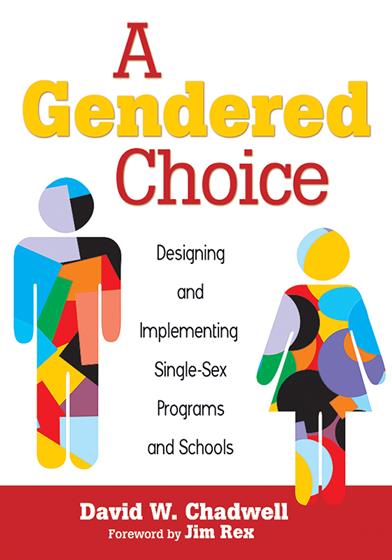List of Tables
Foreword
Preface
Acknowledgments
About the Author
Introduction: Defining Single-Gender Education
Part I. Considering Single-Gender Education
1. Gender Makes a Difference in the Classroom
Starting Point: Examining Gender Influences
Student Performance
Social Differences
Hormonal Differences
Brain Differences
Gender Is an Issue
Chapter One Planning Tool: Reflecting on Gender
2. What We Know About Single-Gender Programs
Demographic Data
Achievement and Other Data
Chapter Two Planning Tool: Using Data
3. Political Opposition to Single-Gender Education
The Legal Context of Single-Gender Education
Positions Against Single-Sex Education
Parting Words
Chapter Three Planning Tool: Debating Single-Gender Education
4. Frequently Asked Questions: Concerns and Options
Questions About Socialization
Questions About Planning
Questions About Instruction
Chapter 4 Planning Tool: Clearing Roadblocks
PART II. Designing A Single Gender Program
5. Rationale and Structure
Involve Key Stakeholders: Create an Exploratory Group
Learn Together About Single-Gender Education
Align the Program With the School’s Mission Statement
Develop a Rationale: Look at School Data
Decide on a Structure
Chapter 5 Planning Tool: Developing Rationale and Structure
6. Legal Issues and Logistics
Meeting the Federal Regulations for Single-Gender Programs
Single-Sex Schools
Creating a Master Schedule
Chapter 6 Planning Tool: Examining Legal Boundaries and Schedule Restraints
7. Communication
Communication With Principals and School Administrators
Communication With Teachers
Communication With Parents
Communication With Students
Communication With School Board Members
Order of Concerns in Communicating With Each Group
Avoiding Stereotypes
Chapter 7 Planning Tool: Preparing for Communication
8. Building Community
Integration of Single-Gender Programs Into School Culture
Identity of the Single-Gender Program
Location of Single-Gender Classes
Program Creed
Public Relations Plan
Coordinator for the Single-Gender Program
Team Building for Students
Chapter 8 Planning Tool: Creating Community
9. Program Price
Low-Cost Options
Moderate-Cost Options
High-Cost Options
Chapter 9 Planning Tool: Budgeting and the Impact of Gender
PART III. IMPLEMENTING A SINGLE-GENDER PROGRAM
10. Professional Development
Professional Development Opportunities Prior to Implementation
Possible Timelines to Prepare Teachers Prior to Implementation
Continued Professional Development After Implementation
Timeline to Support Teachers After Implementation
Chapter 10 Planning Tool: Developing a Professional Development Plan
11. Program Evaluation
Ensuring Nondiscrimination
Reviewing the Rationale: Format
Reviewing the Data: Indicators
An Ongoing Review Process
Chapter 11 Planning Tool: Preparing for Evaluation
12. Sustaining a Single-Gender Program
Strong Principal Leadership
Institutionalize the Single-Gender Program
Keep the Program Manageable
Agree on Strategies to Use With Boys and Girls
Mentor New Teachers
Continue Professional Development
Instituting Change
Chapter 12 Planning Tool: Sustaining Change
REPRODUCIBLE RESOURCES
Resource A: Sample Creeds From Single-Sex Schools
Resource B: Sample Proposal Form for Creating a Single-Gender Program
Resource C: Sample Team-Building Activities for Students
Resource D: Organizations for the Learning of Boys and Girls
Resource E: Sample Annual Single-Gender Program Review Form
Resource F: Sample Letter to Parents to Survey Their Interest
Resource G: Sample Letter to Parents Informing Them of Single-Gender Program and Surveying Their Interest
Resource H: Sample Letter to Parents (School Selecting Students With Coed Option Explained)
Resource I: Sample Letter to Parents (All Students in Single-Gender With Coed Option Explained)
References
Index



